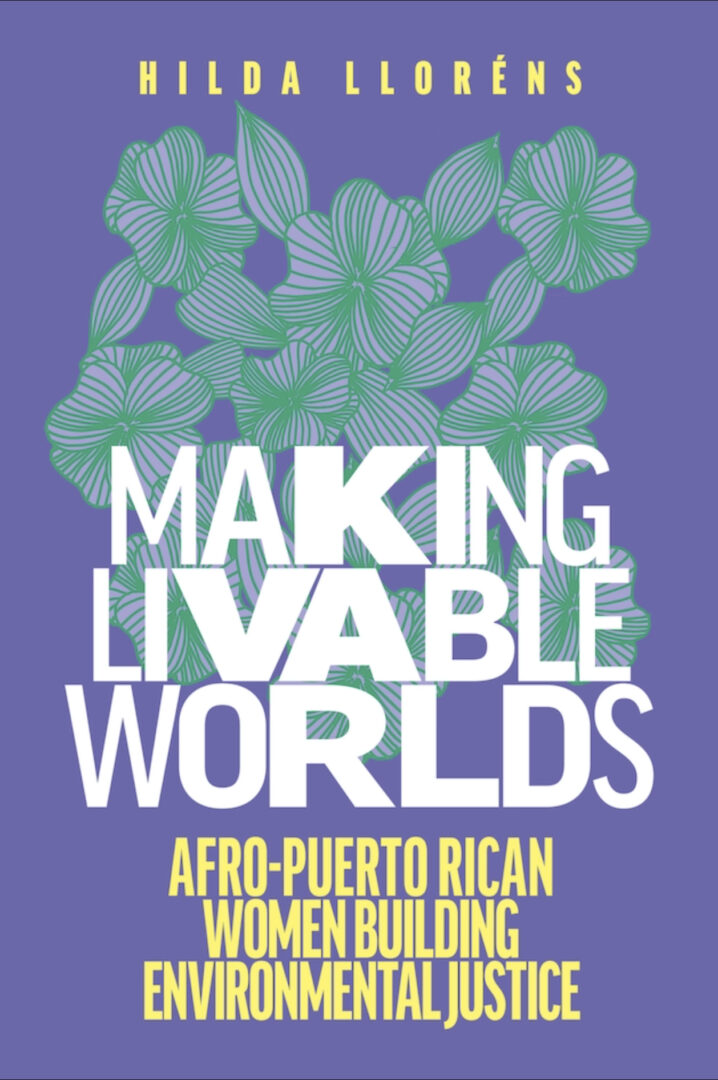This review examines Hilda Lloréns’s research into the role that Afro-Puerto Rican women play in advocating for environmental justice and building a sustainable environment in the Puerto Rican archipelago, particularly after the devastation left behind by Hurricanes Irma and Maria in 2017, and the subsequent catastrophic effects of COVID-19 in 2020. Lloréns shows that Afro-Puerto Rican women are able to survive in the face of racial and ecological discriminations and marginalizations, and their survival is emblematic of Puerto Rico’s own survival. The author devotes the entirety of her book to show that as an “ethnographer of home,” as she calls herself, it is essential for people to create livable worlds within which they can survive. Survival in the midst of catastrophic climate change is difficult, Lloréns argues, primarily because Puerto Ricans are often on the receiving end of austerity measures that make their existence tenuous, at best. These austerity measures typically come after a climatic event, and result in limited access to clean water, food, electricity, healthcare, housing, and education, which only serve to exacerbate the desperation that many on the island feel. While this desperation was widespread across the island after the hurricanes in 2017, residents in the southeastern region of the island (predominantly Afro-Puerto Ricans) were even more affected. Lloréns shows how these people used their limited resources to cull an existence out of a seemingly hostile land and create a community that sustained them. Lloréns draws on personal experiences, the experiences of her family, ethnography, anthropology, and interviews to show how vital it is to examine Puerto Rico not as a homogenous space but rather as a heterogeneous one with its unique complexities. And by centering the work and experiences of Black Puerto Ricans, Lloréns gives voice to a group that is largely left on the margins of society, but who demonstrates the importance of building community as a sustaining entity.
Keyword: Puerto Rico
Review of Policing Life and Death: Race, Violence, and Resistance in Puerto Rico by Marisol LeBrón (University of California Press)
Using a multifaceted and transdisciplinary approach, Marisol Lebrón analyzes the development of punitive governance in Puerto Rico. Lebrón’s approach pays particular attention to how capitalist colonial settings in Puerto Rico lead to the categorization of racialized, gendered, and classed populations as problematic subjects who then become the target of state violence as public policy. Intertwined with the state and its legitimacy, the book also looks at how these populations resist repressive policies and affect social relations of power on the island.
Ocúp(arte): The Humanities Manifesto
Statement of occupation of the Humanities Action Committee, University of Puerto Rico, Río Piedras
smartAction
Images from an art exhibition inspired by the 2010–2011 University of Puerto Rico student Movement.
La Performatividad Colectiva como Arte Publico: Acción dentro de la Huelga de la Universidad de Puerto Rico / Collective Performance as Public Art: Action inside the University of Puerto Rico’s Strike
In April 2010, the University of Puerto Rico experienced a moment of political convulsion due to a series of measures and budget cuts that the administration tried to implement. These events moved the students to demand a reason for these budget cuts. After not getting any clear or valid answers from the administration, the student body organized a series of protests that lead to an almost two-month long strike. My paper is mainly focused on the artistic manifestations that resulted from the strike. These, from our perspective, can easily ft into what is considered public art, may them be intended as such or not, because they transform the street into a place of dialogue and relationships.

